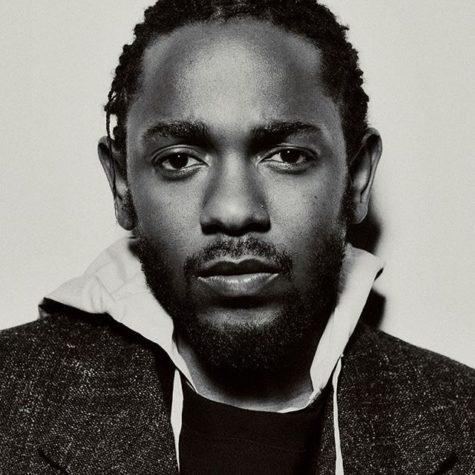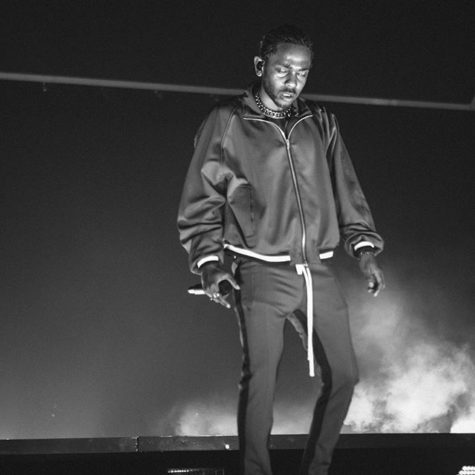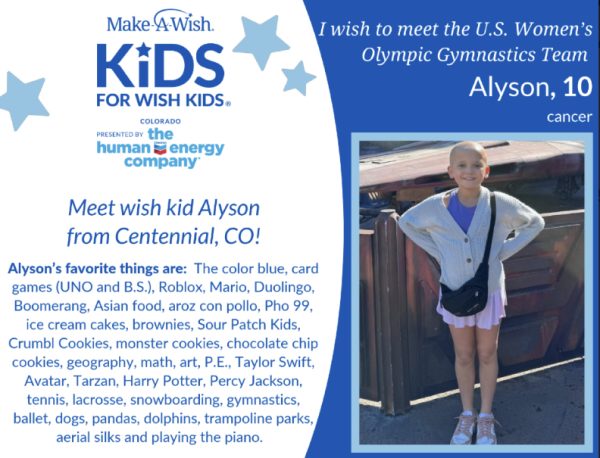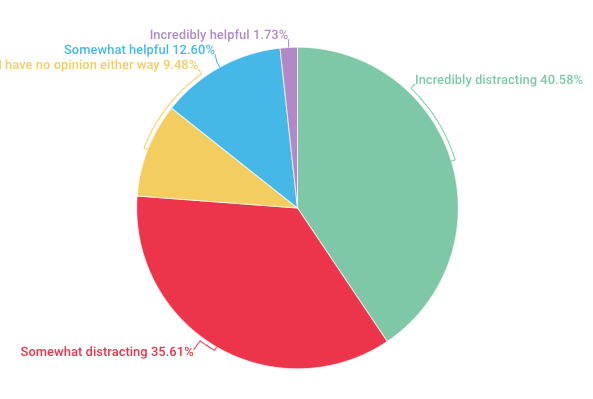Kendrick Lamar– a good kid in a m.A.A.d city

Kendrick Lamar’s “good kid, m.A.A.d city” deluxe album cover
February 1, 2022
Kendrick Lamar
Kendrick Lamar was born to the streets of Compton California on June 17th, 1987. Growing up Kendrick was surrounded by gang violence and drug use,which he talks about in some of his tracks. In 2003 at age 16 Kendrick released his first mixtape under the name K-Dot which pulled attention to young rapper, Kendrick was eventually signed by Top Dawg Entertainment. ThroughTop Dawg Entertainment he released 2 more mixtapes, “Training Day”(2005) and “C4” (2009).
In 2010, Kendrick started releasing music under his birth name Kendrick Lamar. Following the name change, he released his fourth mixtape Overly Dedicated, and then his first full-length studio album “Section.80”. Following the release of “Section.80”, Kendrick continued to explode onto the mainstream working with massive artists like Lil Wayne. Helping to continue honing his craft, Dr. Dre took him under his wing and played a mentor role during the most crucial part of his career.

In October of 2012, Kendrick released his second full-length album “good kid, m.A.A.d city” regarded as one of the best hip hop albums of all time,. Post-release Kendrick appeared in conversations with hip-hop greats including Lil Wayne, Kanye West, and Jay-Z. Thinking there was absolutely no way to top good kid Kendrick dropped “To Pimp a Butterfly”. Fans loved TPaB, many considered it to be his best work with the critics and media agreeing with them. Being nominated for 11 Grammys showcased the sheer talent of the album and was proved even more so when it won the award for rap album of the year.
Coming off debatably two of the greatest hip hop albums of all time Kendrick came back hot dropping “DAMN” in April of 2017. “DAMN” received commercial and critical success, once again showing that Kendrick Lamar is an all-time great. Kendrick was nominated for 7 Grammys and swept the rap categories winning best rap song and best rap album , going on to win a total of 5 Grammys. In 2018, Kendrick shocked the world making history being the first non-classical or jazz artist to win the Pulitzer Prize.
Good kid, m.A.A.d city
“Good kid, M.A.A.d city” was released in 2012 and it made me feel as if Kendrick was finally opening up and making music about himself and who he is. “good kid, m.A.A.d city” is a story about Kendrick growing up in a city that is slowly making him “mad”. This is perfectly illustrated in the track “The Art of Peer Pressure” which without fail shows that changing yourself to please others can lead you to feel guilty and regretful.
“Good Kid, m.A.A.d city” is a work of art that illustrates how the culture of the city and the people around you sculpt your future. Throughout the album, Kendrick realizes how the gang activity, violence, and racism that was prominent when he was growing up was turning him into someone he didn’t want to be. Realization being the main theme of the album is shown mainly on the track “Real” where he realizes who he is and what he wants to do.
Sherane a.k.a Master Splinters Daughter
In this track, Kendrick mentions how he met a girl at a house party, he and the girl exchanged numbers and keep in touch over the summer. Kendrick acknowledges that Sheranes’s family has a history of gang-banging but disregards it because of how much he wants her.
One night Kendrick decides to go over to Sherane’s house forgoing his past fear. All he can think about on the drive over and when he gets there all the anticipation he built up is shot down when Kendrick pulls up to the house, “I’m two blocks away, two hundred and fifty feet And six steps from where she stay, she wavin’ me ‘cross the street I pulled up, a smile on my face, and then I see Two n*****, two black hoodies, I froze as my phone rang.”

Bitch, Don’t Kill My Vibe
Bitch, Don’t Kill My Vibe is a song focused on Kendrick voicing his opinions on the current state of the rap game. He tries to explain how he is striving to be different by maintaining his vision or his “Vibe”. “Fell on my face and awoke with a scar another mistake livin’ deep in my heart wear it on top of my sleeve in a flick,” this line from Kendrick is him keeping true to his vision showing when he falls or is hurt he picks himself up and looks ahead not worrying about mistakes.
Backseat Freestyle
In the outro of the previous song, one of Kendricks friends asks him to rap, this song serves as a flashback and is not truly what present-day Kendrick believes. Backseat freestyle reflects the attitude and emotions of the young people stuck in corrupt societies or a “m.A.A.d city”.
Young people sometimes become obsessed with being superior and having power and Kendrick shows his own lust near the end of this track “Goddamn I got bitches, damn I got bitches damn, I got bitches, wifey, girlfriend, and mistress all my life I want money and power, respect my mind or die from lead showers.” In this line, Kendrick exposes his lust and greed and what he will do to feed those feelings.
The Art of Peer Pressure
I think The Art of Peer Pressure is the best-written song on the whole album. The way The Art of Peer Pressure perfectly illustrates the influence of the people we are around perfectly. Kendrick constantly uses the phrase “until I’m with the homies,” being a good kid Kendrick is heavily pressured to do things with his homies to fit in.
“until I’m with the homies,”
— Kendrick Lamar
The track has Kendrick telling the story of a night when he and his friends burglarize a house and then run from the cops. The pressure to fit in takes a toll on Kendrick making him regret what he did and feel guilty. The track ends with Kendrick and his friends talking about Kendrick meeting with Sherane that night.

Money Trees
Money Trees acts as a recap track going through the story so far as Kendrick brings up the events that occurred during “The Art of Peer Pressure” like robbing the house and then bragging about his time with Sherane. Kendrick also references “Backseat Freestyle” when he talks about rhyming to beats.
The main line of the song “Everybody gon’ respect the shooter/But the one in front of the gun lives forever.” is deeply important, not just as a life motto, but in regards to the events that later take place in this story regarding other characters.
Poetic Justice
Being a love song dedicated to Kendricks’s early love Sherane “Poetic Justice” helps round out the story for its eventual lead into tracks “good kid” and “m.A.A.d city”. Kendrick is obviously attracted to Sherane but he still has his doubts mainly because he does not know her background, these feelings are shown in the line “If a flower bloomed in a dark room would you trust it?”. At the end of the track, it picks up where “Sherane a.k.a Master Splinters Daughter” ended with Kendrick seeing two hooded individuals who then jump him.
good kid
The track starts with a depiction of the immediate aftermath of Kendrick getting jumped which then exposes the album’s theme of realization. This realization is that Kendrick needs to get out of the hood before it turns him mad. In this track, Kendrick dives into the negative effects of gang culture and being racially profiled by police.
“good kid” being the first half of the album’s title tracks illustrates how Kendrick like Tre in the 1991 film “Boyz n the Hood” was bullied by gangsters for being good and profiled by police officers for being black. Something that listeners might miss is that “good kid” is the only track in the album to have no profanity once again showing how Kendrick is guilty by association which is also talked about throughout the album.
m.A.A.d city
“m.A.A.d” is both an acronym for “my Angels on Angel dust” and “my Angry Adolescence divided”. After Kendrick is jumped it brings back memories of similar situations, witnessing a murder at a burger stand when he was 9 (could be referring to his uncle Tony, see “Money Trees”) or how his cousin died back in ‘94.
m.A.A.d city’ is the turn up. That’s the side of Compton that everybody knows, the aggressive side.
— Kendrick Lamar
Kendrick also talks about how his father had him get a job but is later fired for being pressured into staging a robbery. In the final verse, he tries to let the good shine through and offer words for the youth and how they don’t have to give in to the temptations and pressures of society.
Swimming Pools (Drank)
In this album’s lead single, Kendrick addresses the psychological connection between peer pressure and alcoholism. Made to sound like a “club anthem” to drink to is actually a deeper take on the social pressure and self-destructive attitudes that drive people to drink.
Kendrick spoke to Complex about the inspiration behind this song: ”What better way to make something universal than to speak about drinking? I’m coming from a household where you had to make a decision—you were either a casual drinker or you were a drunk. That’s what that record is really about, me experiencing that as a kid and making my own decisions.”

Sing about Me, I’m Dying Of Thirst
Kendricks two-part track “Sing About Me, I’m Dying Of Thirst” depicts life in an urban ghetto, from the start to the end of the song Kendrick breaks down the stories that dragged him away from gang culture. At the start of the track, Kendrick raps from the perspective of two other people before rapping from his own to discuss the adversity he faced.
In the second half of the song Kendrick picks up where the outro of “Swimming Pool” left off, Dave gets killed leaving his brother seeking retaliation. “Sing About Me, I’m Dying of Thirst” was produced by two different producers giving each half its own unique sound, the first half was done by Skhye Hutch and Sounwave, and the second half was made by Like of Pac Div.
Real
This song represents the incredibly important realization Kendrick has about loving yourself and how it is a necessary component of having the powerful insight that he describes through the album. This song symbolizes Kendricks’s maturation and how he has grown as not just an artist but as a person, shown in the lower and more controlled tone that Kendrick raps in on this track. At the end of the song, Kendrick says “Or hating the fact none of that shit make me real?” symbolizing how all of the things he loves don’t make him real.
Compton
As the closing track for the album, Kendrick teams up with his mentor/west coast legend and executive producer Dr. Dre. Apart from “Bitch Don’t Kill My Vibe” this is the only track coming from the perspective of current Kendrick.
“Compton” acts as an epilogue to the story having Kendrick look back on the events of his life and how he turned away from the potential life of crime, alcoholism, and violence, and how he has matured into someone that is proud of who they became and how they can be looked up to.










